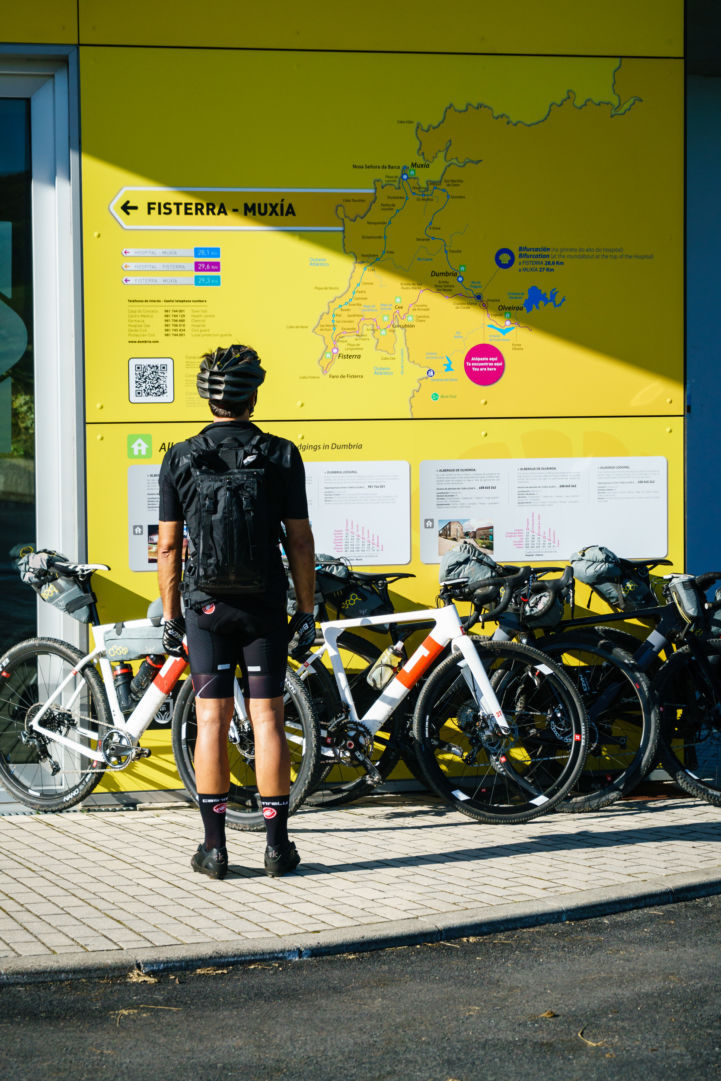Expanding the network: Planned extensions of EuroVelo routes in Spain and Portugal
At the end of June, the EuroVelo Council agreed that two major extensions to existing EuroVelo routes could become EuroVelo Candidate Routes, and the implementation process was started. EuroVelo 1 - Atlantic Coast Route will be extended north from its current end point in Caminha, Portugal, to Fisterra in Galicia, Spain. EuroVelo 3 - Pilgrims Route will be extended westwards from its current end point in Santiago de Compostela and will now also end in Fisterra, the “end of the world”. Joining each other near the small town of Cee in Spain, these two routes will bridge a gap in the EuroVelo network.

The EuroVelo 1 extension will closely follow the Atlantic coastline, following the trajectory of the rest of the route. However, the estuary of the Miño river at the beginning of the extension in Caminha, Portugal, is often clogged by land mass from the nearby Coura River, affecting the Santa Rita de Cássia ferry connection between Caminha and A Guarda, Spain. The route will therefore first lead inland from Caminha for about 30 km along the beautiful Ecopista do Río Miño greenway through Vila Nova de Cerveira up to Valença. It will cross the Río Miño via the International Bridge, where cyclists can visit the Spanish town of Tui before heading back along the river to the Atlantic Coast and further north up to Fisterra. During the largest section of this approximately 500-km extension, cyclists will be able to see the wild Atlantic Ocean directly from the route. The extension will comprise many fascinating touristic attractions and points of interest along the Atlantic coast and Miño river.
The EuroVelo 3 - Pilgrims Route extension will allow cyclists to extend their trip through Galicia and will link the Plaza do Obradoiro square in Santiago de Compostela with Cape Finisterre, which was considered to be the end of the known world for many centuries during Roman times and is a great rock-bound viewpoint onto the Atlantic coast. Many pilgrims follow the Camino de Santiago to this cape. As implied by the route’s name, it follows this 90-km pilgrimage route. Services along the route are abundant and cyclists will be able to share their journey with pilgrims on this extension.
The authorities along these extensions will now add signage to the route and provide information about the itineraries online. Moreover, the EuroVelo Management Team will work with their Spanish and Portuguese partners to keep improving these routes in terms of quality, services etc. With the necessary work being undertaken over the next 18 months, it is expected that the ECF Board will be able to formally approve the extensions to officially join the network at the end of 2021/beginning of 2022.

“Turismo de Galicia believes that the approval of both extensions can greatly increase the attractiveness of the EuroVelo Network as a whole, as well as position Galicia as a cycle-tourism destination committed to ecotourism,” Galicia’s Tourism Office said. “On the one hand, EuroVelo 3 - Pilgrims Route will cross the region from east to west; from the end of the French Way through Pedrafita do Cebreiro on the border with Castilla y León, to Fisterra, on the Costa da Morte, considered to be the western limit of Europe. Meanwhile, EuroVelo 1 - Atlantic Coast Route will continue from the border with Portugal, in the Eurocity of Tui-Valença, following the river Miño and continuing along the Atlantic coast to the town of Cee. The two EuroVelo routes (EuroVelo 1 and EuroVelo 3) will join each other at this point. These new routes will add just over 750 km of signposted Eurovelo Network routes in the Galician region in the coming years.”
Photos: Marc Gash and Agencia Turismo de Galicia